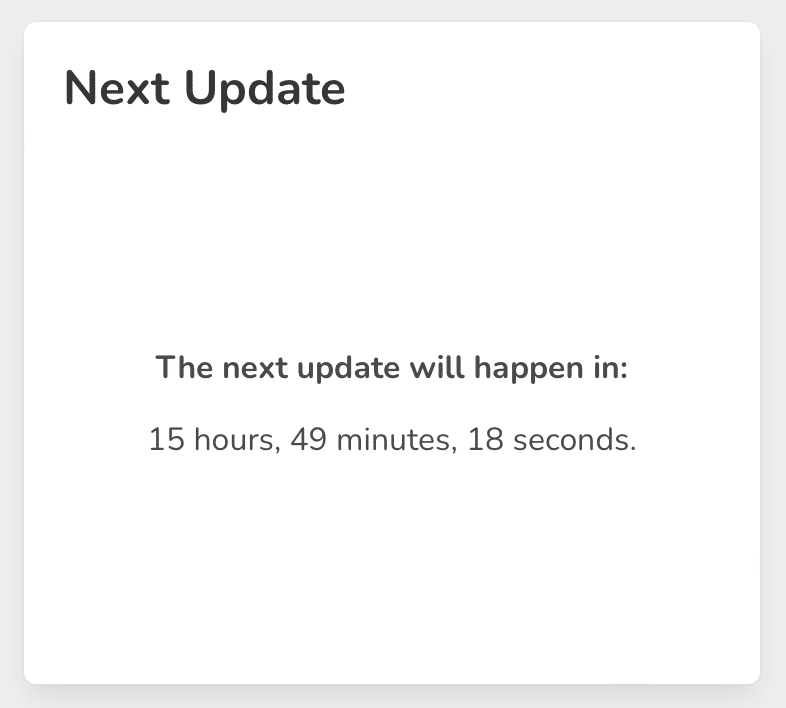Crypto Sentiment: Decoding Fear and Greed
Investors within the crypto world often turn to the fear and greed index to get a pulse on what market participants are feeling. This tool gauges the general mood—whether it’s leaning towards fear or greed—at any given time. There’s the same tool for the stock market too, like CNBC’s fear and greed index, which focuses on the U.S. market vibes.
In this piece, we’ll dive into the fear and greed index specific to the crypto realm, unraveling its importance and the perks it brings to anyone dabbling in crypto investments.
What is the Fear and Greed Index within the Crypto Market?
The crypto fear and greed index is a well-liked sentiment tracker within the cryptocurrency space. Created by Alternative.me, it is a handy resource for those seeking to make smart investment moves.
This index sheds light on how investors feel about cryptocurrencies, indicating whether the market mood is optimistic or pessimistic. It is usually a useful guide to identify the precise moments to purchase or sell.
The index also offers a have a look at past sentiment trends, providing historical context.
Understanding “Fear” and “Greed”
Fear:
When fear creeps in, it’s actually because investors are nervous in regards to the market’s future, leading them to make safer bets and even panic-sell. If the index shows high fear levels, it’d hint that the market is undervalued and will bounce back soon.
Greed:
Greed takes over when investors are overly confident, often leading to FOMO (fear of missing out) and potentially overvaluing assets. High greed levels on the index might suggest an overheated market, ripe for a correction.
The 6 Key Components of the Fear and Greed Index
Alternative.me’s index is crafted from these six ingredients:
- Price Volatility (25%): Tracks price swings over the past month, with low volatility hinting at a healthy market.
- Market Momentum/Trading Volume (25%): Looks at current trading volumes and momentum; less volume and negative momentum signal fear.
- Social Media (15%): Analyzes chatter on platforms like Twitter and Reddit; more negative vibes point to fear.
- Surveys (15%): Gathers investor sentiment through surveys, where optimistic results suggest greed.
- Dominance (10%): Examines the market share of major cryptos like Bitcoin; a dip in dominance could indicate fear.
- Trends (10%): Uses Google search data, with rising interest in crypto-related terms indicating greed. Conversely, if searches like “Bitcoin price manipulation” surge, it’d signal impending fear.
The fear and greed index is recalculated every day, ensuring you have got up-to-date insights.

How to Use the Fear and Greed Index
The index scales from 0 to 100, with 0 being extreme fear and 100 being extreme greed. Here’s how you need to use it properly:
- Buy the fear, sell the greed: A classic strategy is to purchase when fear dominates and costs are low, and sell when greed is high and costs seem inflated. For instance, if the index is below 30, it is perhaps a superb time to snag some bargains. If it’s over 70, consider cashing in or reducing your exposure.
- Diversify your portfolio: Use the index to balance your crypto holdings. In fearful times, take into consideration adding stable assets or less volatile cryptos. When greed is rampant, it is advisable to enterprise into high-potential assets.
- Stay disciplined: Let the index remind you to follow your plan and never let emotions dictate your actions. Keep your long-term goals in sight, and don’t get swayed by market noise.
- Combine with other indicators: While the index is insightful, it really works best alongside other technical and fundamental evaluation tools for a well-rounded view.
Conclusion
The fear and greed index is essential for crypto investors aiming to know market sentiment and make informed selections. By monitoring the emotional waves of fear and greed, investors can pinpoint buying and selling opportunities, diversify properly, and maintain discipline of their strategies.
Remember, the index is only one tool in your toolkit. Pair it with other evaluation techniques to get a full picture and make sound investment decisions.
FAQ
Is there a Bitcoin fear and greed index?
Indeed, there’s a selected fear and greed index only for Bitcoin. It follows the identical principles because the broader crypto index but zeroes in on Bitcoin’s market sentiment, shedding light on its current volatility and momentum.
Will crypto and Bitcoin return up?
Predicting crypto and Bitcoin prices with certainty is difficult as a consequence of market volatility and various influences. However, the fear and greed index can offer clues about market mood and potential buy or sell opportunities.
When the index shows a number of fear (under 30), it’d suggest undervaluation and a possible rebound. On the flip side, high greed (above 70) might indicate overvaluation and a likelihood for a pullback.
Bear in mind that while the index monitors market sentiment, it doesn’t guarantee crypto prices will rise or fall. Even the very best predictions have their limits. Always do your research and understand the risks involved.
How accurate is the fear and greed index in crypto?
The index gives useful insights into market sentiment, but its reliability hinges on the info and methods used for its calculation.
While it might highlight trends and possible market turns, it shouldn’t be your only guide. The fear and greed index needs to be a part of a broader evaluation when considering a crypto asset’s future price movements.
Disclaimer: The information shared here is just not financial or investment advice. It’s purely the writer’s opinion and mustn’t be seen as trading or investing recommendations. We make no guarantees regarding the completeness, reliability, or accuracy of this information. Cryptocurrency markets are highly volatile and may change unpredictably. Anyone considering investing should research thoroughly and concentrate on all local regulations before making any decisions.
Image Credit: changelly.com
